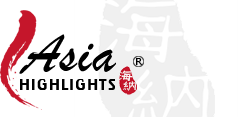The Sukhothai Kingdom ruled in Thailand from 1238 to 1438. Thai people regard the founding of the Sukhothai Kingdom as the founding of their country, and its city-state as the first national capital. During the Sukhothai period, Thailand freed itself from the Khmer Empire and prospered, expanding its influence towards what are today Laos and Cambodia.
What remains today of the Sukhothai Kingdom is the Historical Park near modern-day Sukhothai. The huge complex is a witness to the past splendor of the kingdom, with its numerous temples and the royal palace within walls.
Visiting Sukhothai is nowadays a great opportunity to try to understand how the history of Thailand began, and to catch a glimpse of the former greatness of this now-faded empire.
Quick Facts
- Get to know the capital of the first independent Thai kingdom
- Sukhothai was one of the wealthiest cities in Asia during the 13th century
- After being annexed to Ayutthaya, the kingdom began to decline
- ts huge capital was rediscovered only during the 19th century
- The glorious past of the kingdom is now witnessed to by the amazing National Park near the modern city of Sukhothai
10-Day Thailand Rain Forest and Beach Escape:
Discover real reviews of Highlights Travel Family's best-rated service across trusted platforms.

 
|
My husband and I are planning a 3 week…
Alisa was a great listener to all the things we wanted to incorporate into our trip. We discussed everything throughly, and when I had questions, she had answers the next day. I really appreciate her responsiveness and detail with me. I feel like we are in the best hands with Alisa and Asia Highlights. More
, Mar 2024
|
Very great experience our driver D was…
Very great experience our driver D was never late and always had waters and a cold towel for us and our tour guide Som was very informative and had amazing English I recommend them both highly for anyone else traveling More
Rylan Coache, Feb 2024
|
Excellent guide in Siem Reap
Our recent time spent in Siem Reap was made even more memorable by our expert guide, Som Piseth. Som was knowledgeable, attentive, flexible and super helpful - we learnt so much about Siem Reap and Cambodia in our 3 days with him. His English was excellent and his knowledge of, and pride in, his country was outstanding. We would highly recommend Som for anyone wanting an excellent guide in Siem Reap! More
Sharon Townshend, Feb 2024
|
Foundation of the Kingdom (13th century)
Before the 13th century, Tai kingdoms were all in the north of the country. Sukhothai was the trade center of Lavo (currently Lopburi). Secession from the Khmer Empire began around the end of the 12th century, with Sukhothai's first king, Pho Kun Sri Indraditya.
Under the reign of King Ramkhamhaeng (1278-98), the kingdom knew a period of prosperity and expanded its territory to modern-day Laos and Cambodia.
In the Bangkok National Museum, it is still possible to admire a stele about King Ramkhamhaeng and his reign. The King is also commemorated by a statue placed in 1971 near the entrance of the Historical Park. The statue, on an elevated platform, is surrounded by panels depicting the King in various situations.
Another witness to this period is the Si Satchanalai Historical Park, containing the ruins of the ancient vassal town of the Sukhothai Kingdom. The area used to be an outpost of the Khmer Empire, as can be seen from the style of some of the temples.
Glazed ceramics that were exported to other Asian countries are a famous feature of the former city. A few kilometers north, visitors can find a conservation center where they can admire excavated kilns and many examples of ceramic ware.
Domination of Ayutthaya (beginning of the 14th century)
After the death of Ramkhamhaeng, his son Loethai became king. Vassal kingdoms escaped the influence of the new Sukhothai king, and the power of the kingdom began to decline.
In 1349, the army of the Ayutthaya Kingdom invaded and conquered Sukhothai. Besides, there were a few feuds between the kings and their heirs, and the kingdom was further divided.
Sukhothai ceased being an independent kingdom when the king of Ayutthaya, Borommaracha II, appointed his son as viceroy of Sukhothai.
Important historical records of the period are the Silajaruek of Sukhothai, hundreds of stone inscriptions that tell the story of King Ramkhamhaeng and his son, King Loethai.
Kamphaeng Phet ("Walls of Diamond") used to be an important town of the kingdom, as it served as a garrison town to protect first Sukhothai, then Ayutthaya. Today, it is possible to visit the Historical Park, with its royal palace and numerous temples built between the 13th and 17th centuries.
The National Museum exhibits artifacts from several eras, like a two-meter-tall bronze statue of Shiva (from the early 16th century).
10-Day Thailand Honeymoon Tour:
Decline (14th–15th century)
In the 15th century, Sukhothai was united with Ayutthaya. Sukhotai's culture largely influenced Ayutthaya's. The latter didn't have a centralized administration, and the territories of Sukhotai (called "northern cities", or "mueng nuea") were ruled by local aristocrats. In 1462, Sukhotai made an alliance with an enemy state, Lan Na, and rebelled against its rulers.
The most important of the northern cities was Phitsanulok. During this time, Phitsanulok served as a "second capital" of the kingdom, and in 1463 the king moved his residence there.
Modern Phitsanulok, 380 km north of Bangkok, has as its most popular attraction the Wat Phra Sri Ratttana Mahathat (or Wat Yai, "big temple"). It was built in 1357 and is home to the Phra Buddha Chinnarat, one of the Buddha's most revered images in Thailand.
Fall of the Sukhothai Kingdom (16th century)
King Naresuan of Phitsanulok, crown prince of Ayutthaya, was forced to move the people from many cities (such as Sukhotai, Phichai, Phichit, and Prabang) to the southern central plain, because of war with the Burmese.
When the crown prince of Burma died, these cities were restored as provinces of the Ayutthaya Kingdom. This big change meant the official end of the Sukhothai Kingdom.
9-Day Thailand East Coast Island Hopping Tour:
Rediscovery of the Ancient Capital (18th- 19th century)
After establishing the capital of Thailand in Bangkok in 1793, Rama I found the deserted city-state of Sukhothai. In 1801, the king commissioned the construction of many temples in Bangkok, and many statues were brought from surrounding cities. One of these statues is the 8-meter-tall bronze statue of Buddha now placed inside Wat Suthat, a Buddhist temple in Bangkok.
In 1833, before ascending the throne, Mongkut (King Rama IV) travelled the country as a monk. He was a man of culture, who loved the arts, and he began rediscovering the fallen city-state of Sukhothai. He discovered the Ramkhamhaeng stele now displayed in the National Museum in Bangkok.
In 1907, Vajiravudh, the crown prince, conducted archeological expeditions to Sukhothai and other old towns. His book "Phra Ruang City Journey" has been used by later archeologists and historians.
Restoration: Sukhothai Historical Park (20th century)
The restoration of Sukhothai started in 1960 with the work of the Thai Fine Arts Department, and it was declared a UNESCO World Heritage site in 1991.
Today, it is possible to visit the Sukhothai National Park, near the modern city. The complex occupies 70 square km and contains about 190 ruins.
Wat Mahathat
The most important temple of the complex is Wat Mahathat, the "temple of the great relic". It was founded in 1292 by Sri Indraditya and was the main temple of the kingdom. Its design is based on the mandala, the Buddhist and Hindu representation of the universe.
The central stupa (a hemispherical temple) was built in 1345 to preserve relics of the Buddha. Surrounded by smaller stupas displaying Khmer influence, this central one is shaped like a lotus bud, and its base is decorated with 168 sculptures of Buddha's disciples walking in adoration.
Noen Prasat
Noen Prasat (or "Palace Hill") is what remains of the royal palace. It was discovered in 1833 by Mongkut, and is built on a large square base (200 x 200 meters). Historians assume the palace used to be the royal cremation place, as ashes and bones have been found on a nearby brick platform. Here, Mongkut also discovered the Ramkhamhaeng Stele.
Wat Si Sawai
One of the oldest temples in Sukhotai, Wat Si Sawai was founded at the end of the 12th century and dedicated to Vishnu. Three laterite prangs (tower-like spires common during the Khmer Empire) represent the Hindu trinity, and are enclosed by a moat. Each prang contains a crypt. The central one displays a few remaining stucco works on top.
When during the 14th century the temple was adapted to the needs of the Buddhist faith, vihara (spaces of leisure inside Buddhist temples) were added under the central prang. The temple is an important example of how Khmer art changed into Thai art.
Visit Thailand with Asia Highlights
Getting to know the rich history and culture of a country is an amazing experience that can change your life. Asia Highlights can help you craft the perfect trip: you won't miss any of the wonderful attractions Thailand has to offer.
Our knowledgeable staff will help you create your itinerary and select appropriate accommodation for you and your loved ones.
Why Asia Highlights (10,000+ reviews & 98.8% 5-star rating)
- Save Your Time:
- Less research, more enjoyment!
- Real-time 1V1 expert planning
- Maximize Your Flexibility:
- Personal local guide and ride
- Explore at your own pace
- Celebrate Your Journeys:
- Specially-crafted family adventures
- Celebrate milestones with style!
- Thailand Weather in January 2025: Which Island/Best Places to Visit
- Thailand Weather in February 2024/2025: Which Island/Best Places to Visit
- Thailand Weather in March 2024/2025: Temperature, Places to Visit, Travel Tips
- Thailand Weather in April 2024: Temperatures, Places to Visit, Songkran Festival
- Thailand Weather in May 2024: Too Hot & Rainy? Best Places to Go and Travel Tips
- What's the Weather Like in Thailand in June?
- Thailand Weather in July 2024: Tips for a Family Vacation
- Thailand Weather in August 2024: Temperature and Best Places to Go
- Thailand Weather in September 2024: Temperature, Best Places to Visit
- Thailand Weather in October 2024: Still Rain? Where to Visit?
- Thailand Weather in November 2024: Places to Go, Costs, and Crowds
- Thailand Weather in December 2024: Places to Go, Costs, and Crowds
Get Inspired with Some Popular Itineraries
At Asia Highlights, we create your kind of journey — your dates, your destinations, at your pace. You can have any trip tailor made for your travel.

